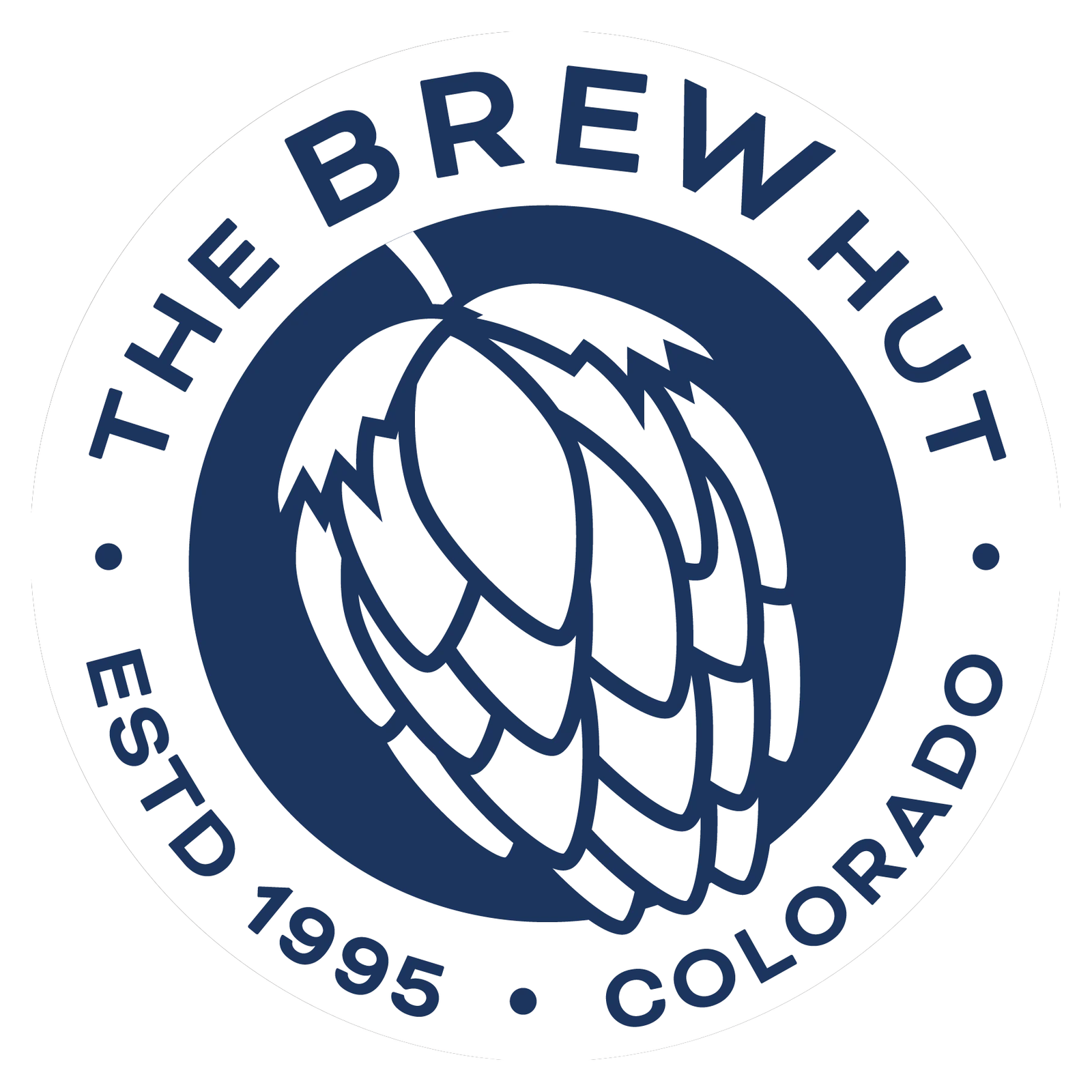The Brew Hut's Annual Homebrew Competition
Thanks to all who participated in the The Brew Hut's Annual Homebrew Competition.
Past Winners
View past winners:
There were 237 entries judged and 167 registered participants, judges, and stewards.
Results
Pro-Am - Dry Dock Brewing
The 2nd place entry serves as a backup in case the 1st place winner is unable to participate in the Pro-Am.
| Place | Brewer | Entry Name | Style | Club |
|---|---|---|---|---|
| 1st | Mark Pennick | She Fancies Herself A Little Bit French | 34C: Experimental Beer | Brew Crew [CO] |
| 2nd | Joey Wilhelm | The Answer | 15B: Irish Stout | Lakewood Fermentation Club |
Heavy Medal Five (86 Participating Brewers)
| Place | Brewer | 1st | 2nd | 3rd | HM | Score | Club |
|---|---|---|---|---|---|---|---|
| 1000 1st | Mark Pennick | 2 | 2 | 0 | 0 | 18.02 | Brew Crew [CO] |
| 2000 2nd | Mark Wethington | 2 | 1 | 1 | 0 | 17.02 | Aurora City Brew Club |
| 3000 3rd | Ryan Wankel | 2 | 1 | 0 | 0 | 14.02 | Lakewood Fermentation Club |
| 4000 4th | Terry Fast | 0 | 2 | 2 | 0 | 14.00 | Lakewood Fermentation Club |
| 5000 HM | Geoff Humphrey | 1 | 1 | 1 | 1 | 13.01 | Rock Hoppers Brew Club |
Scores and tie-breakers have been applied in accordance with the scoring methodology. Numbers reflected are rounded to the hundredth place. Hover over or tap the question mark icon () for the actual calculated value.
Club Heavy Medal Five (13 Participating Clubs)
Scores and tie-breakers have been applied in accordance with the scoring methodology. Numbers reflected are rounded to the hundredth place. Hover over or tap the question mark icon () for the actual calculated value.
Winning Entries
Belgian Ale (10 entries)
| Place | Brewer | Name | Style | Club |
|---|---|---|---|---|
| 1st | Chris Egolf | Summer's End Saison | 25B: Saison | Rock Hoppers Brew Club |
| 2nd | Brad Bagby | Saison Du Hound | 25B: Saison | Aurora City Brew Club |
| 3rd | Matt Gervais | To My Wits End | 24A: Witbier |
Mead (7 entries)
| Place | Brewer | Name | Style | Club |
|---|---|---|---|---|
| 1st | Mark Wethington | Bumble In the Bramble | M2C: Berry Mead | Aurora City Brew Club |
| 2nd | Thomas Herold | Holiday Fruitcake Mead | M4C: Experimental Mead | |
| 3rd | Jeremy Burke | Blackberry Bliss | M2C: Berry Mead |
Hybrid Beers (11 entries)
| Place | Brewer | Name | Style | Club |
|---|---|---|---|---|
| 1st | Matthew McGavin | McGavie Kolsch | 5B: Kölsch | |
| 2nd | Adam Thompson MHP | Callie From the Valley | 19B: California Common | |
| 3rd | David Ulrich | Rockin' Summer Kolsch | 5B: Kölsch |
Amber Lagers (12 entries)
| Place | Brewer | Name | Style | Club |
|---|---|---|---|---|
| 1st | Mark Wethington | Smoke Pocket | 6B: Rauchbier | Aurora City Brew Club |
| 2nd | John Diaz | Viennese Breeze | 7A: Vienna Lager | Parker Hop-Aholics |
| 3rd | Terry Fast MHP | T'ling | 2B: International Amber Lager | Lakewood Fermentation Club |
| HM | Geoff Humphrey MHP | Ich Komme Zurück | 7A: Vienna Lager | Rock Hoppers Brew Club |
IPA (14 entries)
| Place | Brewer | Name | Style | Club |
|---|---|---|---|---|
| 1st | Matthew McGavin | Burn the Boats Ddh NEIPA | 21C: Hazy IPA | |
| 2nd | Terry Fast MHP | Misty Mountain Hops | 21C: Hazy IPA | Lakewood Fermentation Club |
| 3rd | Bobby Rinehart MHP | Jasper-Esque | 21C: Hazy IPA | Lakewood Fermentation Club |
| HM | Julie McKay | Dark Skye | 21B2: Black IPA | Parker Hop-Aholics |
Spice Is Nice (13 entries)
| Place | Brewer | Name | Style | Club |
|---|---|---|---|---|
| 1st | Ryan Wankel MHP | Bourbon Barrel Aged 5 Labs | 30D: Specialty Spice Beer | Lakewood Fermentation Club |
| 2nd | Julie McKay | Ouch! Dammit! | 30A: Spice, Herb, or Vegetable Beer | Parker Hop-Aholics |
| 3rd | Thomas Mahoney | Pepper Stout | 30A: Spice, Herb, or Vegetable Beer |
Brown Ale (12 entries)
| Place | Brewer | Name | Style | Club |
|---|---|---|---|---|
| 1st | Cody Collier | Porter There Partner! | 13C: English Porter | Aurora City Brew Club |
| 2nd | Peter Lubbers | Brindle Brown Ale | 19C: American Brown Ale | |
| 3rd | Matthew Johnsen MHP | We're Coming To Get You Barbara! | 13A: Dark Mild | Rock Hoppers Brew Club |
British and Irish Ale (13 entries)
| Place | Brewer | Name | Style | Club |
|---|---|---|---|---|
| 1st | Matthew Johnsen MHP | Overstimulation Calms Me | 12A: British Golden Ale | Rock Hoppers Brew Club |
| 2nd | Geoff Humphrey MHP | I've Been Going To This High School For Seven and A Half Years - I'm No Dummy | 12A: British Golden Ale | Rock Hoppers Brew Club |
| 2nd | Victor Matthews MHP | Scotchy Scotch Scotch | 14B: Scottish Heavy | Lakewood Fermentation Club |
| 3rd | Jordan Stone | Ysywar | 11C: Strong Bitter | Rock Hoppers Brew Club |
Specialty Alternate History (13 entries)
| Place | Brewer | Name | Style | Club |
|---|---|---|---|---|
| 1st | Mark Pennick | She Fancies Herself A Little Bit French | 34C: Experimental Beer | Brew Crew [CO] |
| 2nd | John Horton | West Coast Pilsner | 34B: Mixed-Style Beer | Aurora City Brew Club |
| 3rd | Wade Maslen | Dublin Castle Ale | 27A: Historical Beer | Aurora City Brew Club |
| HM | Stefano Ginocchio | Italian Pils | 34B: Mixed-Style Beer |
Amber and Dark Belgian Ales (13 entries)
| Place | Brewer | Name | Style | Club |
|---|---|---|---|---|
| 1st | Michael Koehler MHP | On the Dark Side | 26D: Belgian Dark Strong Ale | Rock Hoppers Brew Club |
| 2nd | Edward Moore | Wally Dark Strong | 26D: Belgian Dark Strong Ale | Rock Hoppers Brew Club |
| 3rd | Raymond Schultz Co-Brewer: Jessica Finlay-Schultz | Wookin Pa Nub | 26D: Belgian Dark Strong Ale | Aurora City Brew Club |
Cider (11 entries)
| Place | Brewer | Name | Style | Club |
|---|---|---|---|---|
| 1st | Brian Williams | Flathead Lake Cider | C2B: Cider with Other Fruit | Aurora City Brew Club |
| 2nd | Mark Wethington | Perry Perry | C1E: Traditional Perry | Aurora City Brew Club |
| 3rd | Chris Levesque | Mixed Fruit Cider | C2B: Cider with Other Fruit | Olde Town Mash Paddlers |
Sour, Wild, and Wood (11 entries)
| Place | Brewer | Name | Style | Club |
|---|---|---|---|---|
| 1st | Andrew McArthur | Bourbon Barrel Aged Belgian Quad | 33B: Specialty Wood-Aged Beer | Aurora City Brew Club |
| 2nd | Sam Cranfill | RIS | 33B: Specialty Wood-Aged Beer | Parker Hop-Aholics |
| 3rd | John Booth | Anything Gose Tonight | 23G: Gose | Foam On The Range |
Pale Belgian Ales (14 entries)
| Place | Brewer | Name | Style | Club |
|---|---|---|---|---|
| 1st | John Buckles | Six Figure Loss | 25C: Belgian Golden Strong Ale | |
| 2nd | Mark Pennick | Draft Dodger | 26C: Belgian Tripel | Brew Crew [CO] |
| 3rd | Raymond Schultz Co-Brewer: Jessica Finlay-Schultz | Fee Tines A Mady | 26C: Belgian Tripel | Aurora City Brew Club |
International Pale Lagers (7 entries)
| Place | Brewer | Name | Style | Club |
|---|---|---|---|---|
| 1st | Jay Walford MHP | Světlé | 3B: Czech Premium Pale Lager | |
| 2nd | Matt Gervais | Cerveza Mexicana | 2A: International Pale Lager | |
| 3rd | Charles Schick Co-Brewer: Ryan Pachmayer | Feel the Pressure | LSX5: New Zealand Pilsner | Olde Town Mash Paddlers |
Froooot! (13 entries)
| Place | Brewer | Name | Style | Club |
|---|---|---|---|---|
| 1st | Chris Egolf Co-Brewer: Will Johnson | Bière de Garde With Cherries | 29A: Fruit Beer | Rock Hoppers Brew Club |
| 2nd | Mark Pennick | Saison Du Sinaasappel | 29A: Fruit Beer | Brew Crew [CO] |
| 3rd | Stephen Stanley | Raspberry Puree Sour | 29A: Fruit Beer | Aurora City Brew Club |
Pale European Lager (11 entries)
| Place | Brewer | Name | Style | Club |
|---|---|---|---|---|
| 1st | Sam Cranfill | Helles | 4A: Munich Helles | Parker Hop-Aholics |
| 2nd | Eric Hobbs MHP | Fs Lite | 5D: German Pils | Altitude Homebrew Club |
| 3rd | Geoff Humphrey MHP | Die Eier von Satan | 5C: German Helles Exportbier | Rock Hoppers Brew Club |
| 3rd | Terry Fast MHP | The Kinda Love We Make | 5C: German Helles Exportbier | Lakewood Fermentation Club |
Strong Beer (12 entries)
| Place | Brewer | Name | Style | Club |
|---|---|---|---|---|
| 1st | Ryan Wankel MHP | Take Me To Your Dealer 1.2 | 9A: Doppelbock | Lakewood Fermentation Club |
| 2nd | Brian Williams | Sasquatch | 20C: Imperial Stout | Aurora City Brew Club |
| 3rd | Edward Moore | Rhonda Old Ale | 17B: Old Ale | Rock Hoppers Brew Club |
Pale American Ale (12 entries)
| Place | Brewer | Name | Style | Club |
|---|---|---|---|---|
| 1st | Wade Maslen | Exp. Pale Ale | 18B: American Pale Ale | Aurora City Brew Club |
| 2nd | Stuart Hamilton | Colorado Gold | 18B: American Pale Ale | Parker Hop-Aholics |
| 3rd | Matt Gervais | Fifty Shades of Pale | 18B: American Pale Ale |
Dark Lager (9 entries)
| Place | Brewer | Name | Style | Club |
|---|---|---|---|---|
| 1st | Geoff Humphrey MHP | She Only Speaks French, Roy - She Doesn't Speak Imbecile | 8A: Munich Dunkel | Rock Hoppers Brew Club |
| 2nd | Terry Fast MHP | Dark Matters | 3D: Czech Dark Lager | Lakewood Fermentation Club |
| 2nd | Chad Steinke | No Hablo Inbev | 8A: Munich Dunkel | |
| 3rd | Brian Williams | King of the North | 9C: Baltic Porter | Aurora City Brew Club |
| HM | Edward Moore | Miss Kitty Baltic Porter | 9C: Baltic Porter | Rock Hoppers Brew Club |
Marzen (8 entries)
| Place | Brewer | Name | Style | Club |
|---|---|---|---|---|
| 1st | Mark Wojcik | Oktober Glow | 6A: Märzen | |
| 2nd | Josh Takacs | Autumn Fest | 6A: Märzen | Aurora City Brew Club |
| 3rd | Scott Cramer | Maarten's Marzen | 6A: Märzen |
Stout (11 entries)
| Place | Brewer | Name | Style | Club |
|---|---|---|---|---|
| 1st | Joey Wilhelm | The Answer | 15B: Irish Stout | Lakewood Fermentation Club |
| 2nd | Adam Thompson MHP | Curvaceous Cog | 16A: Sweet Stout | |
| 3rd | Scott Turow Co-Brewer: Lauren Turow | Bay-Nay-Na Stout | 16B: Oatmeal Stout |
Sponsors



















Contact
Use the form below to contact a competition official. All fields with a star are required.
